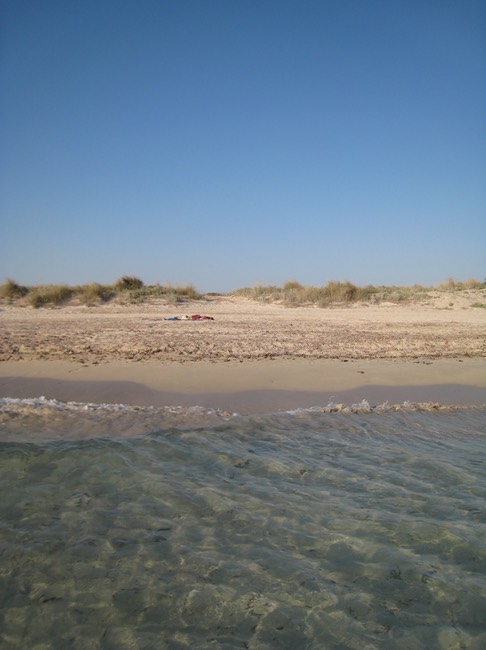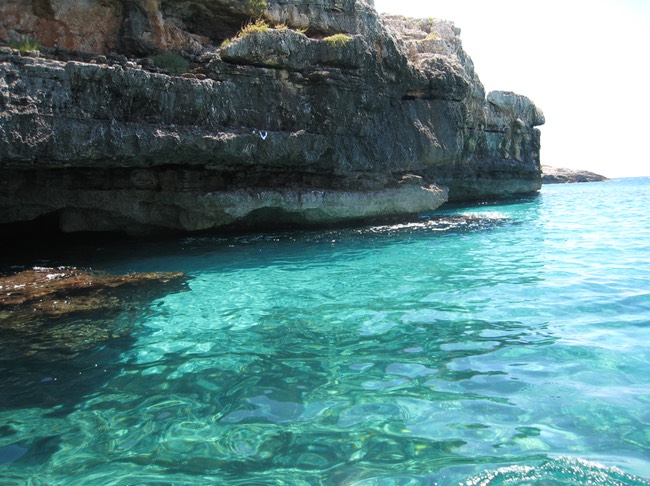
When summer arrives in Vancouver, when the brief joyous period of endless blue sky, flower-fragrant air, and green gardens takes over my consciousness, then my thoughts invariably return to the Salento. Over the years, we have made three different visits to this out-of-the-way corner of southern Italy, and have yet to grow tired of it. Between our first stay, one week of a month-long exploration of the country, and our second, four years passed. How to explain why this quiet countryside of land and sea drew us back more strongly than time spent in Tuscany, Venice, or Rome? Why did the sights feel so strangely familiar and welcoming as we drove toward the seaside villa where we would stay? Why did we feel so much as though we were coming home to a much-loved place?

On our first visit was in June, and the place was empty. We were told that tourists only come in July and August, when Europeans typically vacation. We were charmed and occasionally frustrated by the lack of infastructure for tourists: coastlines were famed for their grottos, but there were no boat tours or rentals; in a countryside filled with grapes, we found no wineries to visit; we would swim in the morning and then set off on an expedition, only to arrive just in time to see everything close for the afternoon siesta, which in southern Italy lasts about five hours. For four years, we remembered Salento as a lovely region filled with silent, heat-parched towns.
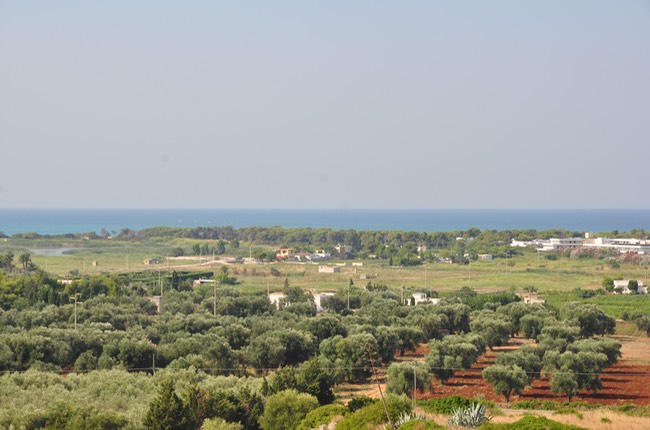
What drew us back? Part of it was the friendliness and charm of our hosts, who rented us a clean, simple little cottage on their beautiful property, and cared for our needs with unexpected warmth. Part of it was the memory of our son playing in the warm water and happily collecting shells on the beach. But it was also something different, an unexpected communion with a type of landscape that was new to us. This region is truly Mediterranean, defined by the climate which is temperate in the winter and hot and dry in the summer, with gentle sea breezes softening the effect as you move from the interior to the coast. The surrounding sea is warm, gentle, emerald; the sky above is a deep blue background for the hot summer sun; the land is made up of rust-brown gardens, silver-green olive trees, and the pale yellows and greens of Mediterranean scrub. Something in this land reached deep within our being. Of all the places we visited on that trip, this was the one that stayed with us the most vividly.
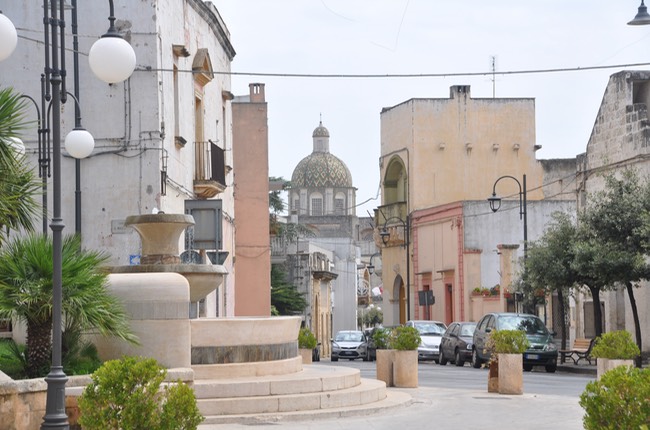
There is history in the small towns and villages, a connection to times long gone. Many cultures have gone into the building of this region, and it shows in the ancient stone buildings called caseddhi, the pre-Roman artifacts in the little museums, the Norman churches and castelli, and the baroque loveliness of Lecce.

Above all, it is a place that exists for its own sake, with little catering to tourism. The beach towns have more shops and resources to deal with the influx of summer visitors, and there is a growing number of shops selling the products of local artisans; but in most respects, the people of the region carry on in their own fashion, expecting visitors to either accommodate themselves to local ways, or to simply stay on the beach (which many of them in fact do).
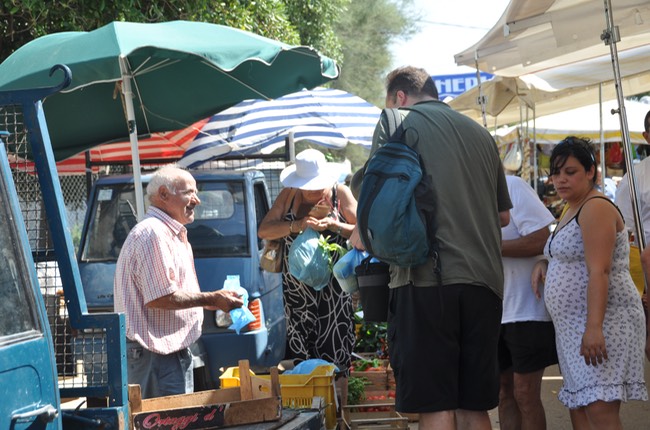
On the seaside, the restaurants feature large patios, and one can order all of the famous Italian specialties. Travel a few miles inland, and they are less turistico: they don’t necessarily feature pizza, they don’t always have outdoor seating, they are not all open for lunch. Gelato, ubiquitous in the smallest seaside hamlets, isn’t always available in the inland villages. However, most places have a café/bar, and there are specialty shops offering fresh pasta or delicious local cheese. Often, there is someone selling a bit of fresh produce at a small table, or off the back of a three-wheeled truck. Even the little supermercatos feature the most gorgeous produce: ripe red tomatoes, yellow peppers, huge heads of garlic, big ripe melons. And of course, there are the weekly mercati, lively and colourful.
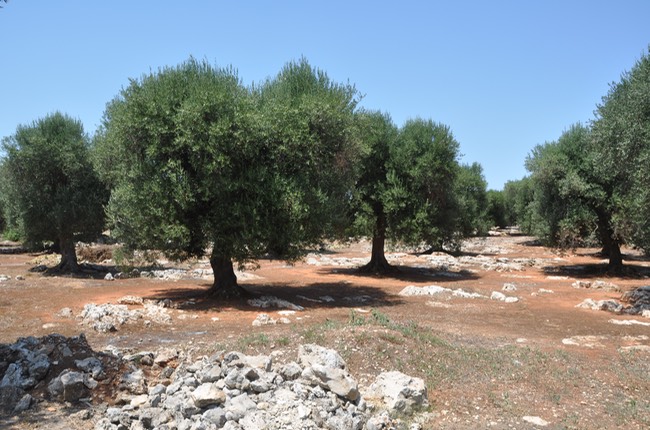
After our first visit, we carried away memories that remained as vivid as the photos we took: the pale sandy beach against the brilliant aqua sea and deep blue sky; the whiteness of Gallipoli in the bright sunlight; the rugged beauty of the coast around the southern tip of the peninsula at Leuca; the old medieval castello at the inland village of Felline, partly converted to offices, and completely accessible to casual visitors. For four years, these memories fueled our eagerness to return.
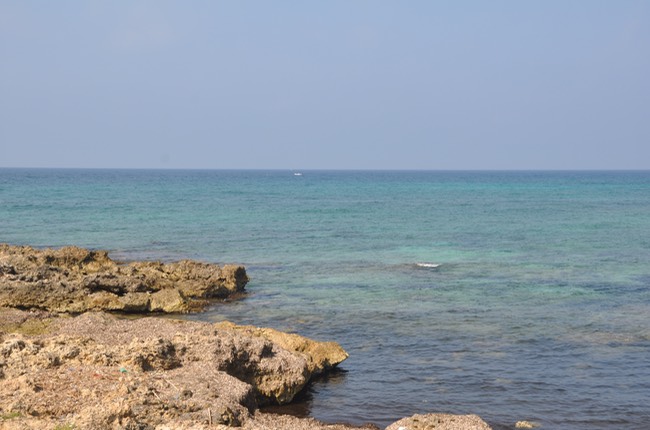
Thus it was that we completed the oddly familiar drive through the sun-baked countryside, passing scenes and towns that we recalled so well. Distances were much shorter than we had remembered, and suddenly we were there, sitting at the same ocean-side gelateria, feeling everything welcome us back with its very sameness. We drove up the dusty drive to the familiar gate, to be greeted by the barking dog and the genuine delight of our Swiss-born host, greeting us in French, “Bonjour, mes amis!” Later, we walked along the dusty country road to the beach for our first sight of the white dune sand, and the mare, the exotic emerald ocean of Salento. When I walked into the glorious warm, clear ocean, I felt a sensation of utter joy.
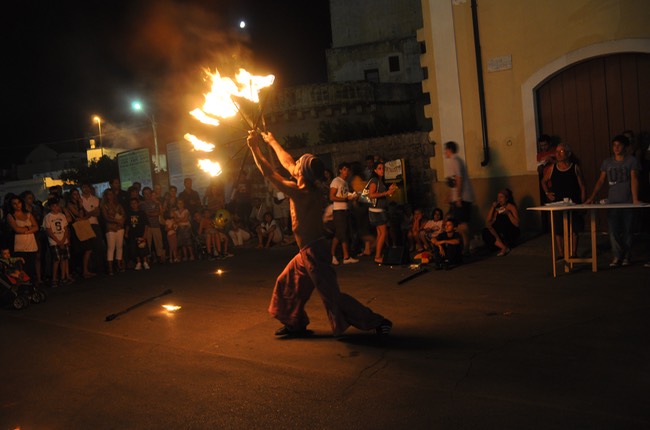
Two years later, we returned again, this time for two full weeks in the heart of the summer tourist season, and found our seaside haven transformed. It was party time in Salento, with carnival-like amusements along the waterfront at night, and inland, each small town with its sagra devoted to a regional product or recipe, really an excuse for nighttime parties away from the beach, with street entertainers, market stalls, and of course food, all soaked in the festive Salentine music called pizzica. But it was still possible to escape the crowds, during the day when the inland towns and villages were quiet with the heat of summer and the lives of their inhabitants. We drank iced cappuccinos in empty bars, browsed local markets, and drove home afterward through dusty olive groves. We ate late, as one does in the heat of a Mediterranean summer, and walked along the waterfront afterward, enjoying the festive atmosphere. We made a new set of memories to keep close until our next return, whenever that shall be.
Photos: grotto near Santa Maria di Leuca; Specchia, olives and the sea; Taurisano; marching band in Soleto; buying lemons in Torre Suda; olive grove; Torre San Giovanni waterfront; pasta festival in Felline; beach at Torre San Giovanni
